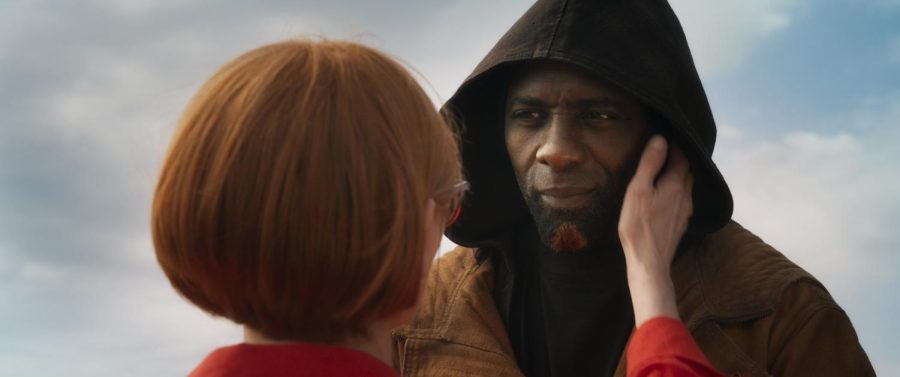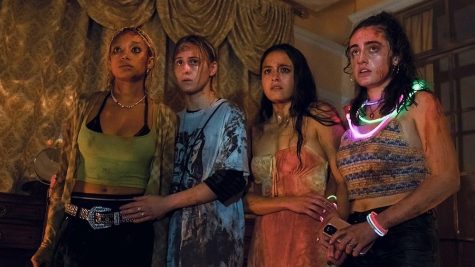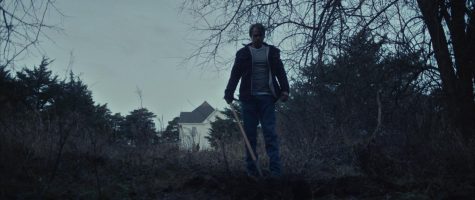‘Three Thousand Years of Longing’: a story about story falls short in tying together its plot
August 30, 2022
This article contains spoilers for George Miller’s “Three Thousand Years of Longing.”
Dr. Alithea Binnie haphazardly scrubs a blue-and-white striped glass bottle she purchased hours before at a store in Istanbul. The bottle breaks and a fiery electromagnetic cloud flies out of the sink and into the lush hotel room. A magical being known as a Djinn materializes with pointed ears, legs covered in fur and an obligation to grant Dr. Binnie three wishes in George Miller’s new film “Three Thousand Years of Longing.”
Miller loosely adapted the film from A.S. Byatt’s “The Djinn In The Nightingale’s Eye” to create a story all about storytelling itself. Literary scholar Dr. Binnie (Tilda Swinton) tells the audience about her time meeting the Djinn (Idris Elba), who shares with her his many life tales. While the film could make interesting commentary on society’s fascination with narratives, it ends up suffering from a forced and forgettable romance, which underwhelmingly concludes an otherwise fantastical film.
The first two acts deliver quite a spectacle, both in terms of whimsical visuals and Elba’s intriguing portrayal of the Djinn, a focal point of the plot. Spanning many historical epochs, from the kingdom of Sheba to the Ottoman Empire, otherworldly CGI is where the film shines, reimagining periods of time into yearnful dreamscapes of rich colors, magic spells and electromagnetic dust.
The film spends most of its runtime exploring The Djinn’s years of anguish, exile, love and loss, so it would make sense for Miller to make the third and final act just as big. Instead, Miller’s exciting storyline dulls and slows down while falling victim to the same genie-type tropes he seemingly set out to debunk, causing flaws in the overall pacing of the movie.
In the film’s oddly-paced third act, Dr. Binnie succumbs to the same age-old and overdone desire — wishing for the Djinn to fall in love with her. This decision seems random, completely out-of-character for Dr. Binnie and, frankly, is an insult to her intellect. Miller’s decision to round out centuries of adventures with a forced, forgettable and incomplete romance begs the question if he even knew the characters in his own movie.
In addition to the issues with the pacing and storyline in the third act, the movie attempts to make broad social commentary that ends up feeling rushed and does not do justice to the actual issue it is trying to highlight. After Dr. Binnie’s disgrace of a wish, she and the Djinn play house in London, where the electromagnetic Djinn begins to weaken due to the city’s busy satellite and cell transmissions. During this section of the movie, Miller attempts to comment on xenophobia with the inclusion of Dr. Binnie’s bigoted neighbors and her disapproval of them, but considering the plot point only took up a few minutes of screentime, the commentary comes off as shallow and underdeveloped.
The social commentary and the weak love story presented in the film comes off as lackluster and empty of development and nuance. While visually eye-catching, “Three Thousand Years of Longing” offers nothing new, leaving its audiences longing for more, even after three thousand years.
2.5 broken bottles out of 5









